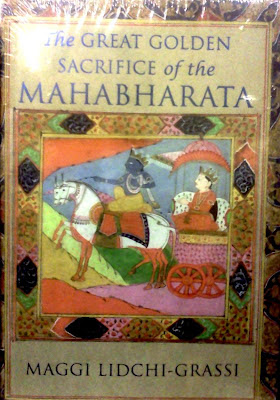I had a few hours to kill in Koramangala earlier in the week, thanks to a shopping spree planned by the ladies. Now, spending three hours at a mall is as much fun as listening to any of our TV media stars pontificate. However, to see if there were other ways of spending the time, I asked people for recommendations on bookstores in the area, apart from the usual suspects like Landmark at the Forum Mall, Sapna Book House, and Crossword. Sameer (@zenx) suggested DC Books. They are "among India’s top five literary publishing houses of India" and started "in 1974 by Dominic Chacko Kizhakemuri" (link). They have an outlet in Koramangala and I decided to pay them a visit with the kids.
Their store is on the ground floor of a house, and while they do have shelves stacked with books, their store seemed to serve more as a warehouse and distribution center than a retail outlet. Which is fine by me. I want the books, and do not care much for the display.
They have books in English and Malayalam. They are located out of a house, and one bedroom is devoted entirely to Malayalam books.
There were a couple of people in the store, mostly busy in inventory work, but were courteous and friendly, and did not mind that we spent more than an hour in the store, flitting between the "verandah", the living room, and the dining room, browsing books, sitting down on the floor to read some others.
In this photo below, you can see the bedroom at the end - which is their Malayalam-specific room.
While we were there, a Flipkart employee also walked in, printouts in hand, large bag in tow, sat down and started going through his printout. I asked him if he was picking up books for delivery to Flipkart customers. He replied that he wasn't, and was in fact there to take delivery of books to take to the Flipkart warehouse. I suppose that Flipkart may be proactively procuring books to stock at its warehouse, in anticipation of orders for these books that sell regularly.
We finally left the store with three books in tow. If you are in that part of town, I would recommend the store for a visit. It provides for a different experience from both the mega bookstores like Sapna as well as the smaller ones that stock magazines, pens, stationery, and some books.
The store is located at the intersection of the "80 Feet Peripheral Road" and "1st Cross", and contrary to what Google Maps shows, they are located right on the main road.
View Larger Map
© 2012, Abhinav Agarwal (अभिनव अग्रवाल). All rights reserved.
Their store is on the ground floor of a house, and while they do have shelves stacked with books, their store seemed to serve more as a warehouse and distribution center than a retail outlet. Which is fine by me. I want the books, and do not care much for the display.
They have books in English and Malayalam. They are located out of a house, and one bedroom is devoted entirely to Malayalam books.
There were a couple of people in the store, mostly busy in inventory work, but were courteous and friendly, and did not mind that we spent more than an hour in the store, flitting between the "verandah", the living room, and the dining room, browsing books, sitting down on the floor to read some others.
In this photo below, you can see the bedroom at the end - which is their Malayalam-specific room.
While we were there, a Flipkart employee also walked in, printouts in hand, large bag in tow, sat down and started going through his printout. I asked him if he was picking up books for delivery to Flipkart customers. He replied that he wasn't, and was in fact there to take delivery of books to take to the Flipkart warehouse. I suppose that Flipkart may be proactively procuring books to stock at its warehouse, in anticipation of orders for these books that sell regularly.
We finally left the store with three books in tow. If you are in that part of town, I would recommend the store for a visit. It provides for a different experience from both the mega bookstores like Sapna as well as the smaller ones that stock magazines, pens, stationery, and some books.
The store is located at the intersection of the "80 Feet Peripheral Road" and "1st Cross", and contrary to what Google Maps shows, they are located right on the main road.
View Larger Map









































